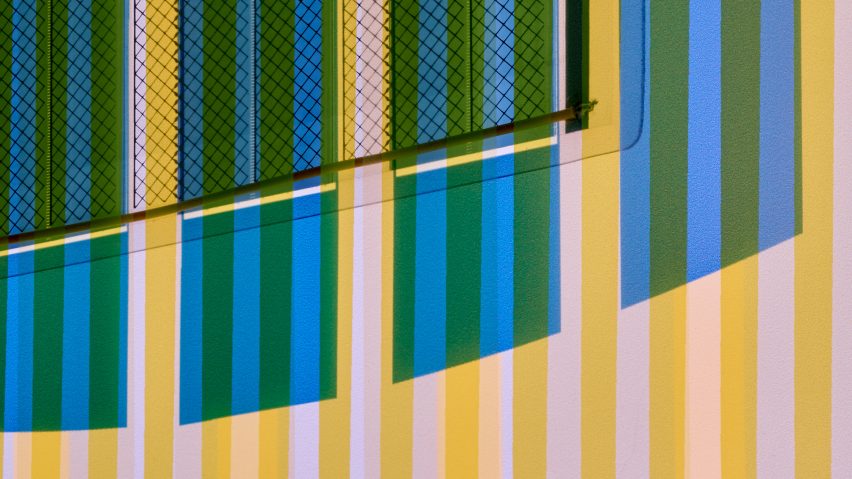
Marjan van Aubel turns solar cells into art with glow-in-the-dark tapestry
Strips of colourful photovoltaic cells are arranged into a geometric pattern to form this artwork, conceived by Dutch designer Marjan van Aubel to bring solar panels from our roofs into our homes.
Named Ra after the ancient Egyptian sun god, the see-through solar tapestry is less than one millimetre thick and was designed to be hung in a window, so that it can cast vivid shadows on the surrounding walls as the light changes throughout the day.
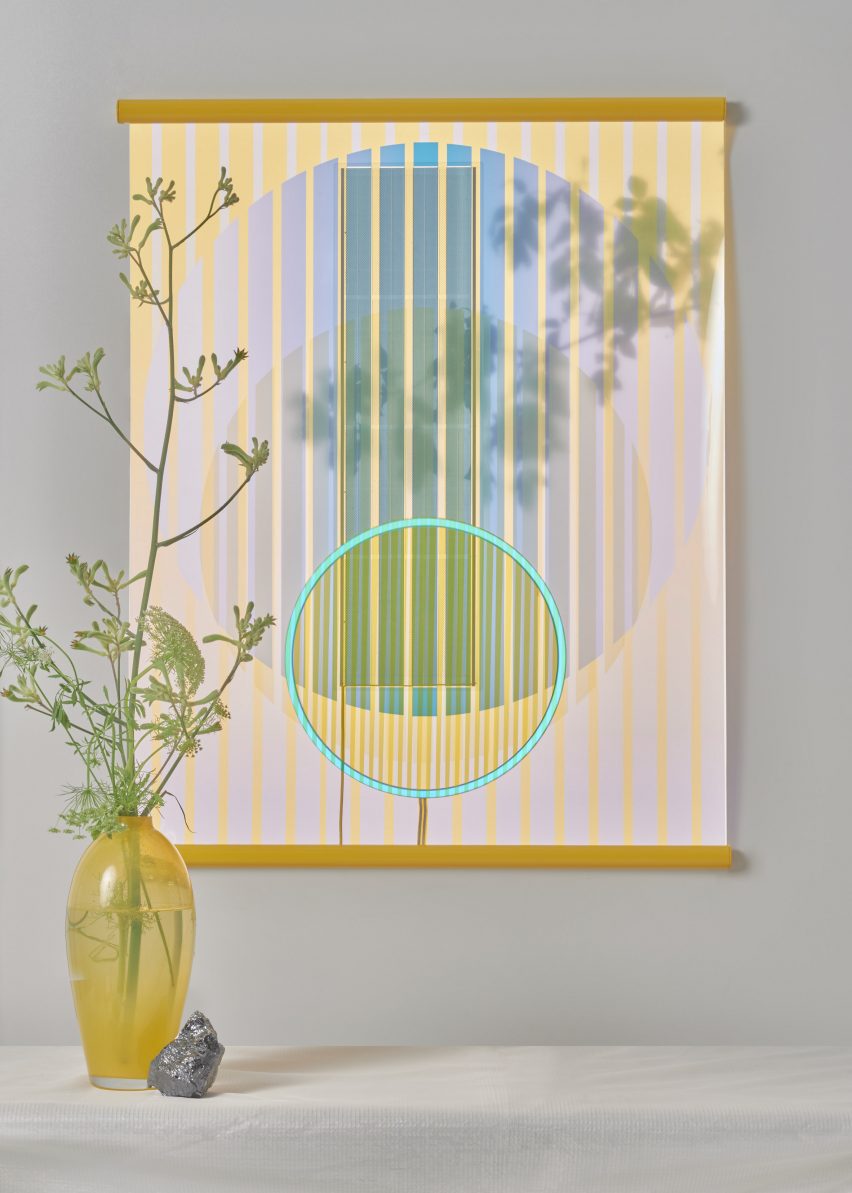
When the sun goes down, a ring of electroluminescent paper embedded in the window hanging starts to glow, powered by the energy that was captured by the photovoltaic (PV) cells throughout the day.
Unlike a traditional solar lamp, such as the Sunne light that van Aubel unveiled last year, Ra's purpose is not strictly to provide illumination.
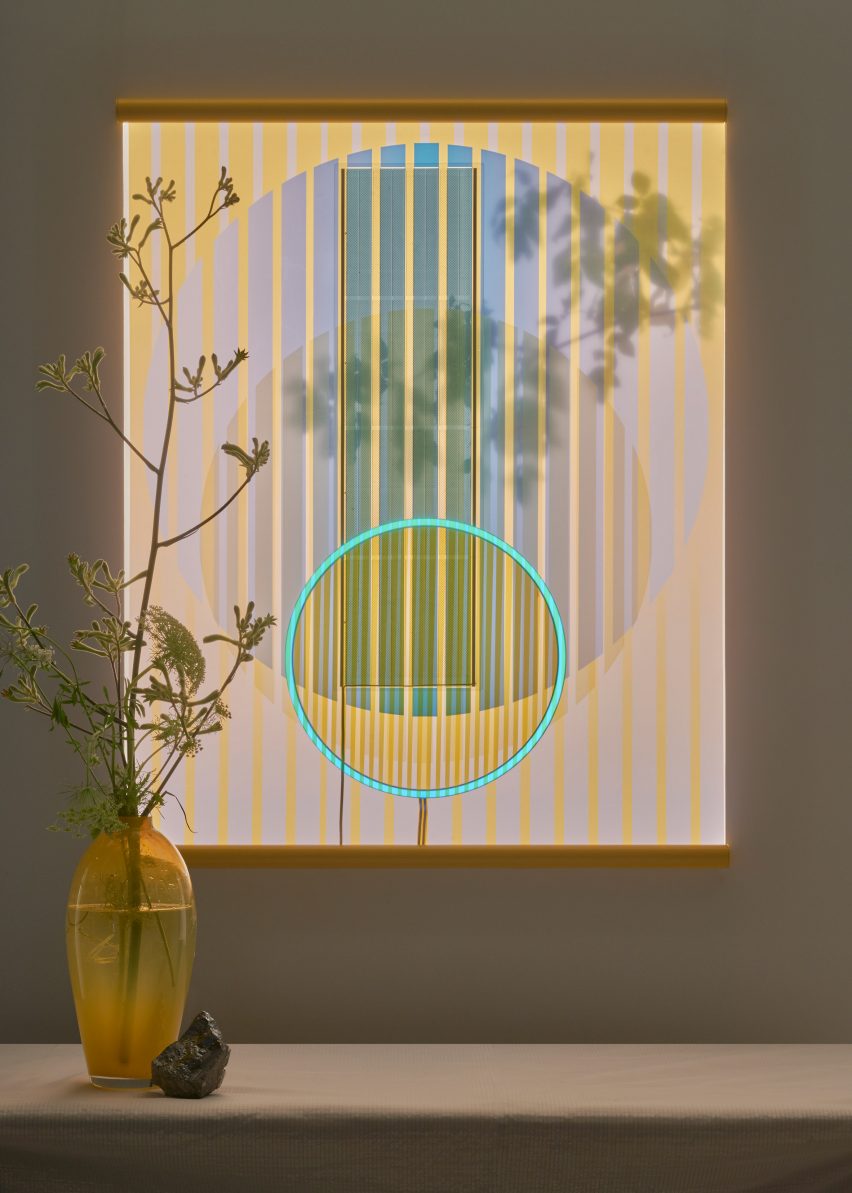
Instead, it was designed to show how the latest generation of clear, pliable PVs can have artistic and decorative applications, rather than just functional ones.
"A coloured, transparent surface that is flexible – this gives you a lot of design possibilities," van Aubel told Dezeen. "It becomes a material in itself that you can work with like glass or clay."
"I think it is nice to show that solar energy can become a form of art," she added. "It becomes something desirable, something that we would like to be surrounded by instead of hiding it."
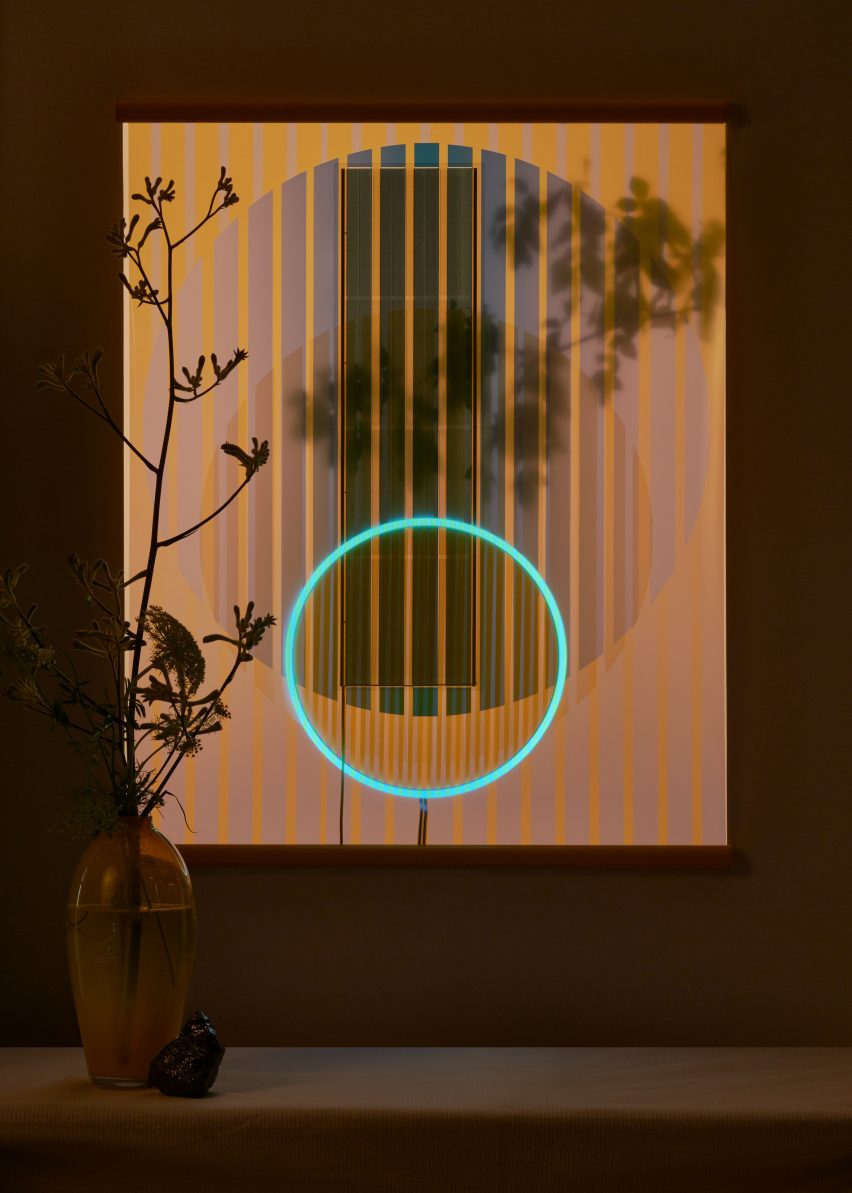
Ra uses the same organic PVs as the solar skylight that van Aubel created for the Dubai Expo 2020, but puts them into a more affordable, accessible form.
Also known as plastic solar cells, this third-generation solar technology works with the help of light-absorbing ink that is applied in thin layers, covering nanoparticles of titanium oxide that can convert the captured sunlight into electricity.
This allows the PVs to be printed almost like a magazine but using a thin sheet of polyethylene terephthalate (PET) plastic instead of paper as a backing.
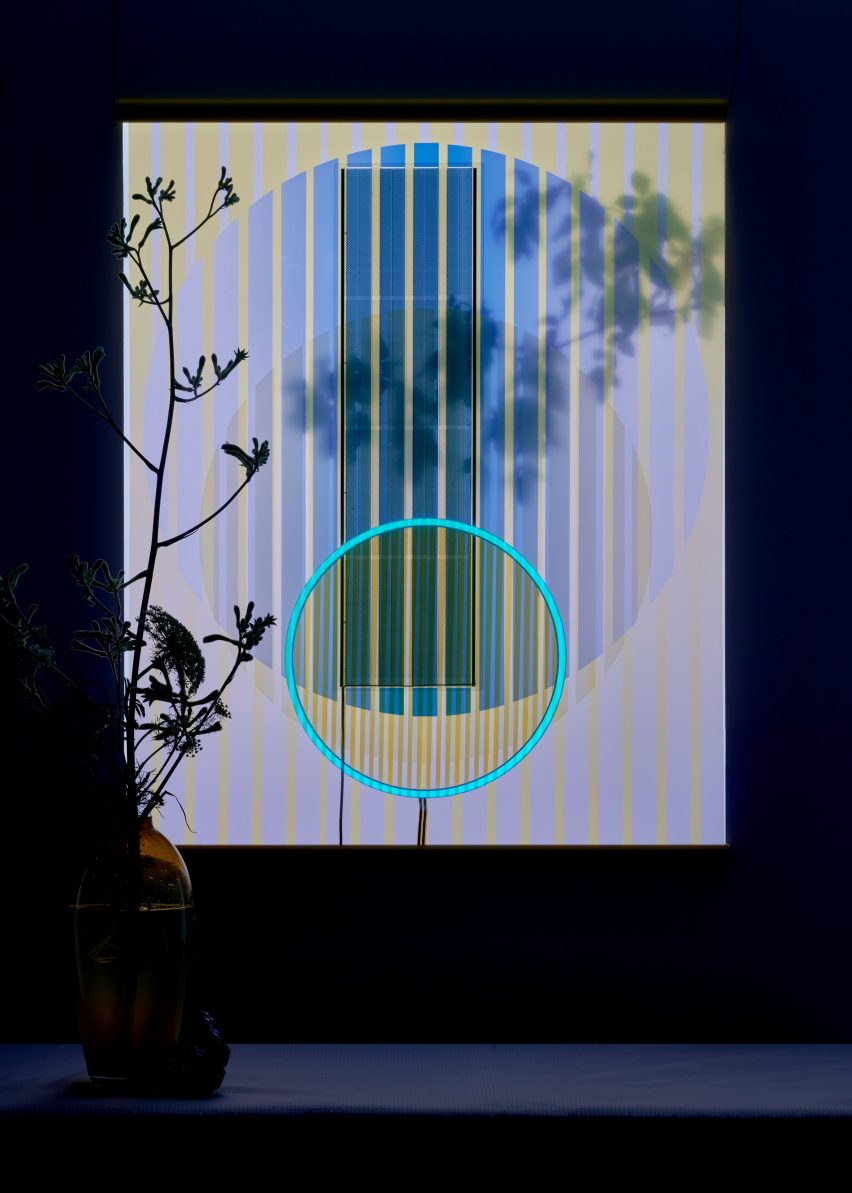
Unlike 90 per cent of solar panels today, which are rigid, heavy blocks with PV cells made from silicon, the final result is flexible and can be bent, coloured and integrated into clothing or used to cover cars and building facades.
Organic solar cells are more than 40 times lighter and 1,000 times thinner than their silicon counterparts, meaning they use materials more efficiently while being easier to transport.
The Ra tapestry was designed to show off these advances and the unique aesthetic qualities of the material by using it to create a super-thin, portable wallhanging that can be rolled up like a scroll.
Instead of using a traditional LED light source, which would have added bulk, van Aubel fashioned the glowing ring at the centre of the artwork from a sheet of electroluminescent paper, like the kind found in watch displays and emergency signs.
Its phosphor coating begins to glow when connected to an electrical current, supplied from the tapestry's integrated battery.
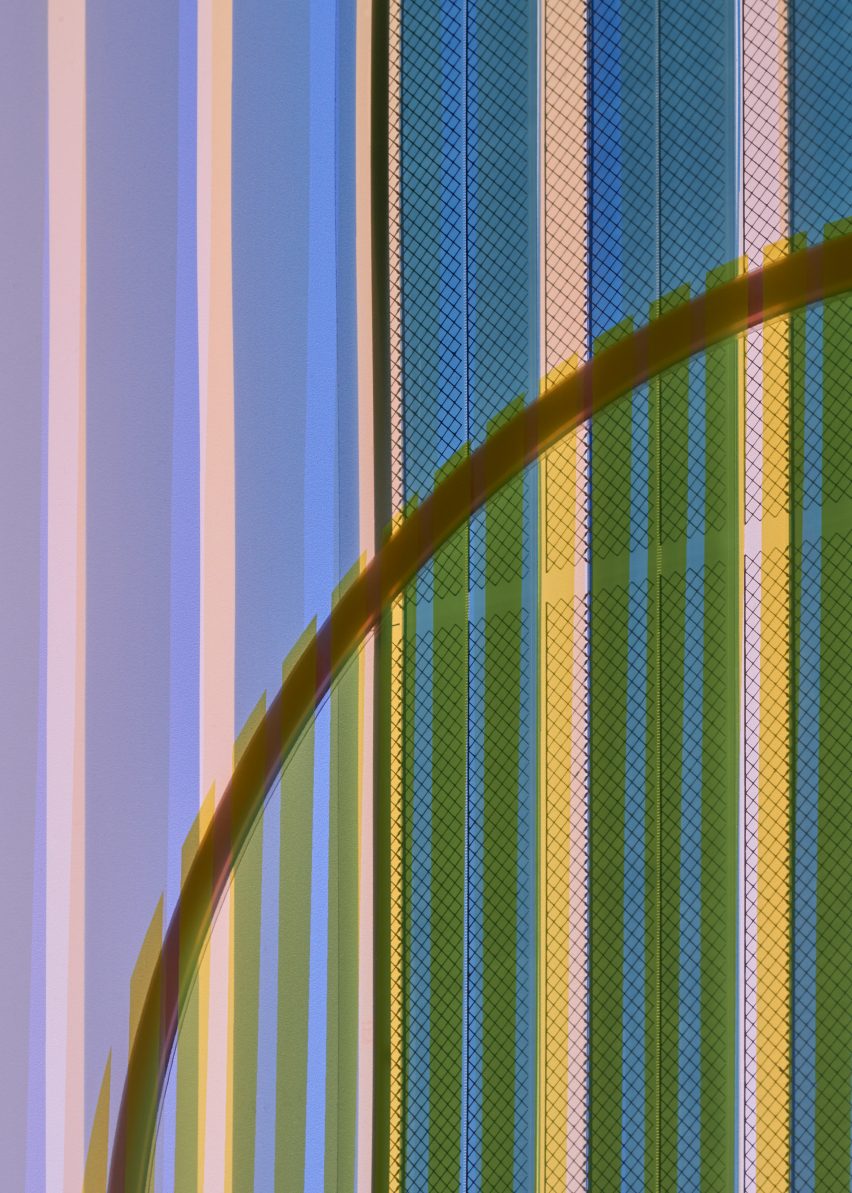
The tapestry is held together without glue so that, much like the solar cells, it can be taken apart and recycled, van Aubel said.
Organic photovoltaics also have a lower energy payback time than any other form of solar panel, meaning it only takes a few months for them to produce as much energy as they consume throughout their production, transport, installation and ultimate recycling.
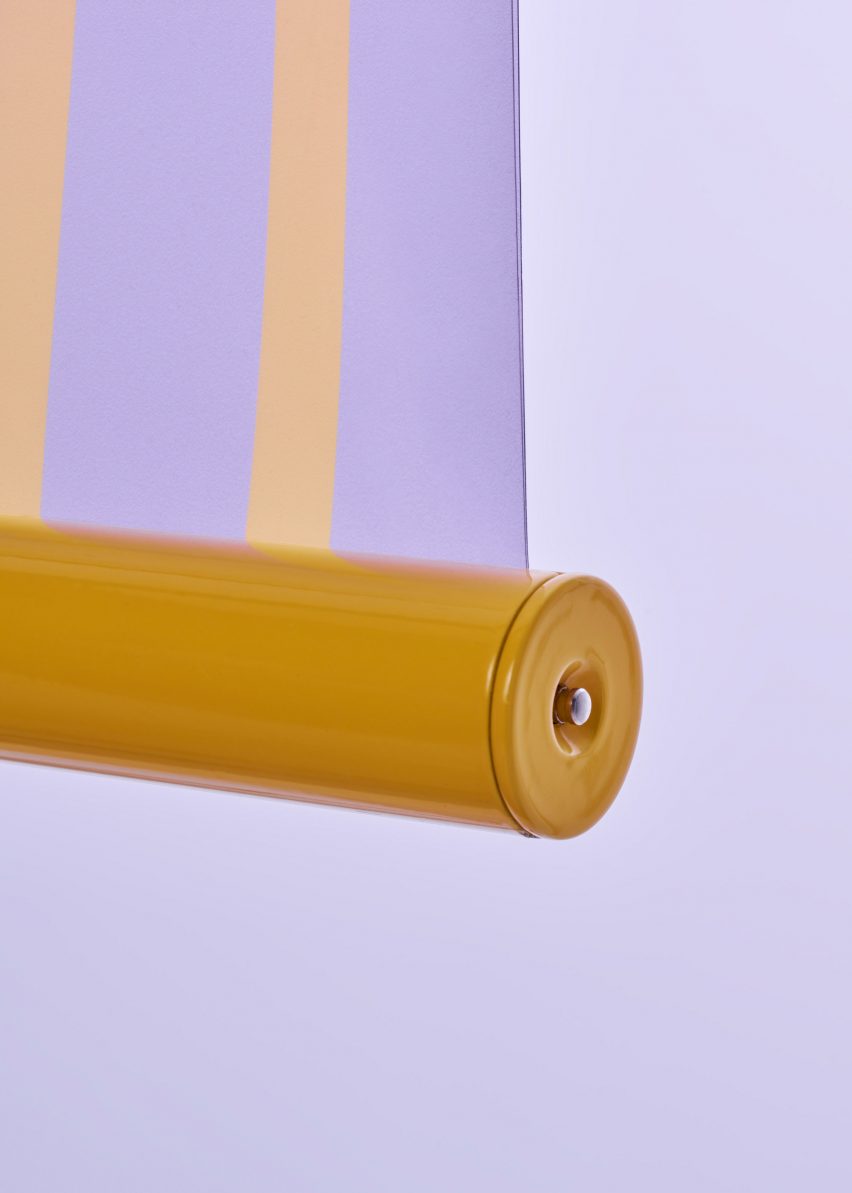
"For an energy source to be truly renewable, it must produce more energy than it consumes during its lifecycle," van Aubel said.
"The energy payback time of organic photovoltaics is much shorter than traditional photovoltaics and they are made so they can be easily recycled and taken apart," she added.
"If we fill our landscapes with solar fields that cannot be recycled, although they last for more than 40 years, we are postponing the problem into the future."
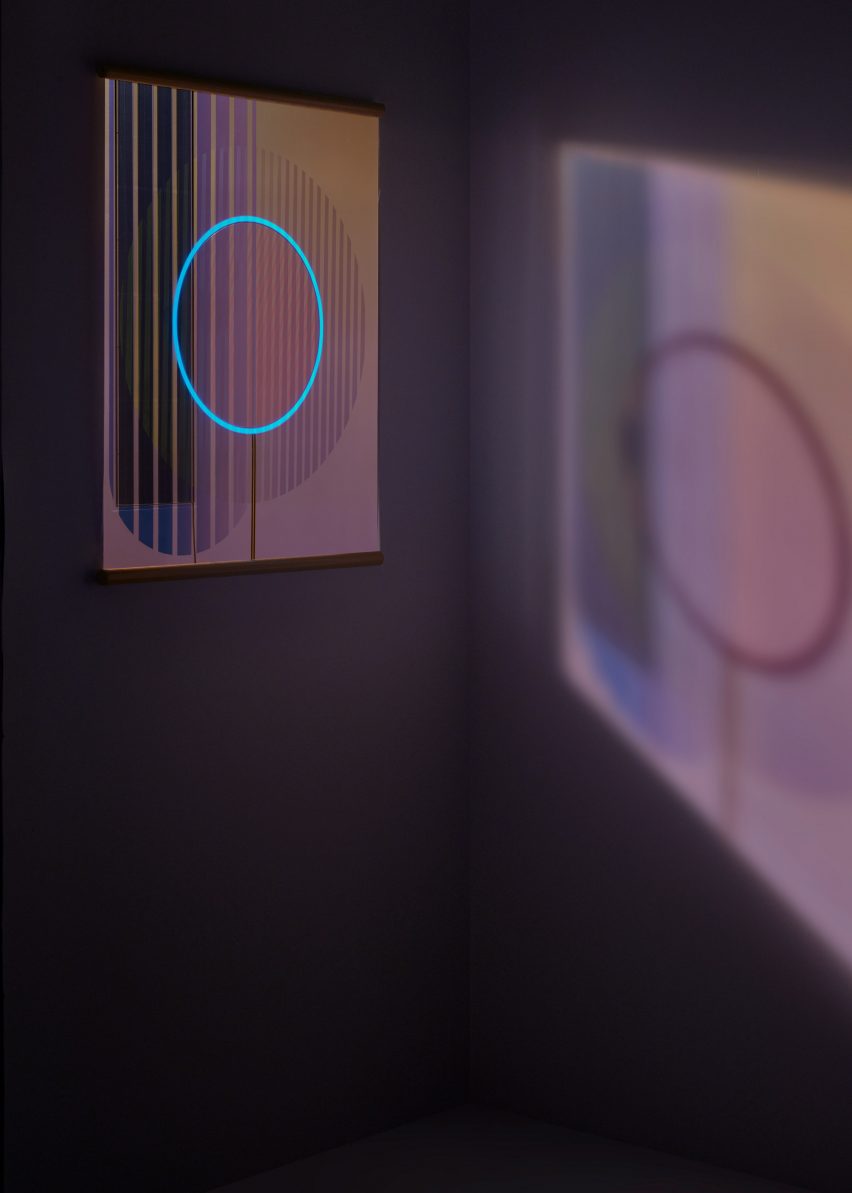
Sustainability will also be a key topic at the inaugural Solar Biennale, which van Aubel is organising at Rotterdam's Het Nieuwe Instituut this September.
The event will bring together creatives and scientists across disciplines to envision a future where everything is powered by the sun.
The photography is by Pim Top.